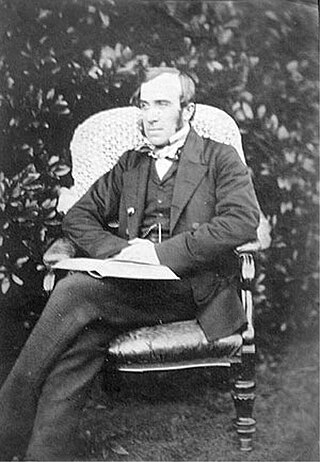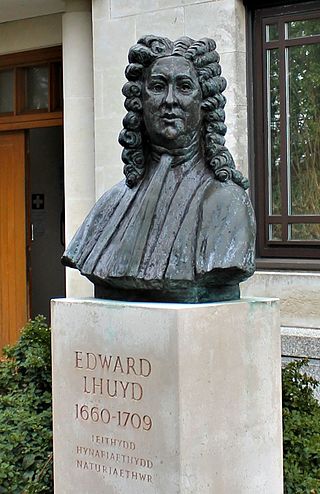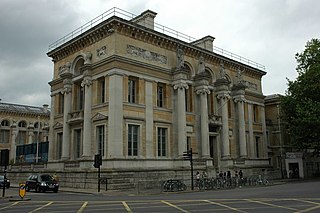
The Ashmolean Museum of Art and Archaeology on Beaumont Street, Oxford, England, is Britain's first public museum. Its first building was erected in 1678–1683 to house the cabinet of curiosities that Elias Ashmole gave to the University of Oxford in 1677. It is also the world's second university museum, after the establishment of the Kunstmuseum Basel in 1661 by the University of Basel.

The Bodleian Library is the main research library of the University of Oxford, and is one of the oldest libraries in Europe. It derives its name from its founder, Sir Thomas Bodley. With over 13 million printed items, it is the second-largest library in Britain after the British Library. Under the Legal Deposit Libraries Act 2003, it is one of six legal deposit libraries for works published in the United Kingdom, and under Irish law it is entitled to request a copy of each book published in the Republic of Ireland. Known to Oxford scholars as "Bodley" or "the Bod", it operates principally as a reference library and, in general, documents may not be removed from the reading rooms.

The East India Company College, or East India College, was an educational establishment situated at Hailey, Hertfordshire, nineteen miles north of London, founded in 1806 to train "writers" (administrators) for the East India Company. It provided general and vocational education for young gentlemen of sixteen to eighteen years old, who were nominated by the Company's directors to writerships in its overseas civil service. The college's counterpart for the training of officers for the company's Presidency armies was Addiscombe Military Seminary, Surrey.

Sir Monier Monier-Williams was a British scholar who was the second Boden Professor of Sanskrit at Oxford University, England. He studied, documented and taught Asian languages, especially Sanskrit, Persian and Hindustani.

Edward Lhuyd was a Welsh naturalist, botanist, linguist, geographer and antiquary. He is also named in a Latinate form as Eduardus Luidius.

The Taylor Institution is the Oxford University library dedicated to the study of the languages of Europe. Its building also includes lecture rooms used by the Faculty of Medieval and Modern Languages, University of Oxford. Since 1889, an Annual Lecture on a subject of Foreign Literature has been given at the Taylorian Institution.

Francis Douce was a British antiquary and museum curator.
Indology, also known as South Asian studies, is the academic study of the history and cultures, languages, and literature of the Indian subcontinent, and as such is a subset of Asian studies.

The Bodleian Art, Archaeology and Ancient World Library holds a large portion of the classical, art historical, and archaeological works belonging to the University of Oxford, England.
Basil Champneys was an English architect and author whose most notable buildings include Manchester's John Rylands Library, Somerville College Library (Oxford), Newnham College, Cambridge, Lady Margaret Hall, Oxford, Mansfield College, Oxford and Oriel College, Oxford's Rhodes Building.

Broad Street is a wide street in central Oxford, England, just north of the former city wall. The street is known for its bookshops, including the original Blackwell's bookshop at number 50, located here due to the University of Oxford. Among residents, the street is traditionally known as The Broad.

The Faculty of Asian and Middle Eastern Studies, is a subdivision of the University of Oxford.
The Indian Institute Library is a dependent library of the Bodleian and part of the University of Oxford in Oxford, England. Opened in 1886, the library specialises in the history and culture of South Asia, Tibet and the Himalayas. The Indian Institute and its library were originally based in the building on the corner of Holywell and Catte Street. It was subsequently occupied by the History Faculty and History Faculty Library.. Traces of the building's original function are still visible, including the gilded weathervane which depicts an elephant with a howdah.
Sir Arthur Ernest Cowley, was a British librarian who was Bodley's Librarian from 1919 until a couple of months before his death. He was also a leading Semitic scholar.

The election in 1860 for the position of Boden Professor of Sanskrit at the University of Oxford was a competition between two candidates offering different approaches to Sanskrit scholarship. One was Monier Williams, an Oxford-educated Englishman who had spent 14 years teaching Sanskrit to those preparing to work in British India for the East India Company. The other, Max Müller, was a German-born lecturer at Oxford specialising in comparative philology, the science of language. He had spent many years working on an edition of the Rig Veda and had gained an international reputation for his scholarship. Williams, in contrast, worked on later material and had little time for the "continental" school of Sanskrit scholarship that Müller exemplified. Williams regarded the study of Sanskrit as a means to an end, namely the conversion of India to Christianity. In Müller's opinion, his own work, while it would assist missionaries, was also valuable as an end in itself.

Naman P. Ahuja is an art historian and curator based in New Delhi. He is Professor of Indian Art and Architecture at Jawaharlal Nehru University, New Delhi where his research and graduate teaching focus on Indian iconography and sculpture, temple architecture and Sultanate-period painting. He is also the Editor of Marg, India’s leading quarterly magazine and journal on the arts, published from Mumbai. His studies on privately owned objects—terracottas, ivories and small finds—have drawn attention to a wide range of ritual cultures and transcultural exchanges at an everyday, quotidian level. He has curated several exhibitions, most notably The Body in Indian Art and Thought, and published books, including The Making of the Modern Indian Artist Craftsman: Devi Prasad.
Andrew S. Topsfield is Keeper of Eastern Art at the Ashmolean Museum, Oxford. He was educated at Winchester College and the universities of Oxford and London. In 1978 he joined the Indian section of the Victoria and Albert Museum as an assistant keeper and moved to the Ashmolean Museum as assistant keeper of eastern art in 1984.
Percy Manning (1870–1917) was a British antiquary, folklorist, and archaeologist, with a special interest in Oxfordshire.













